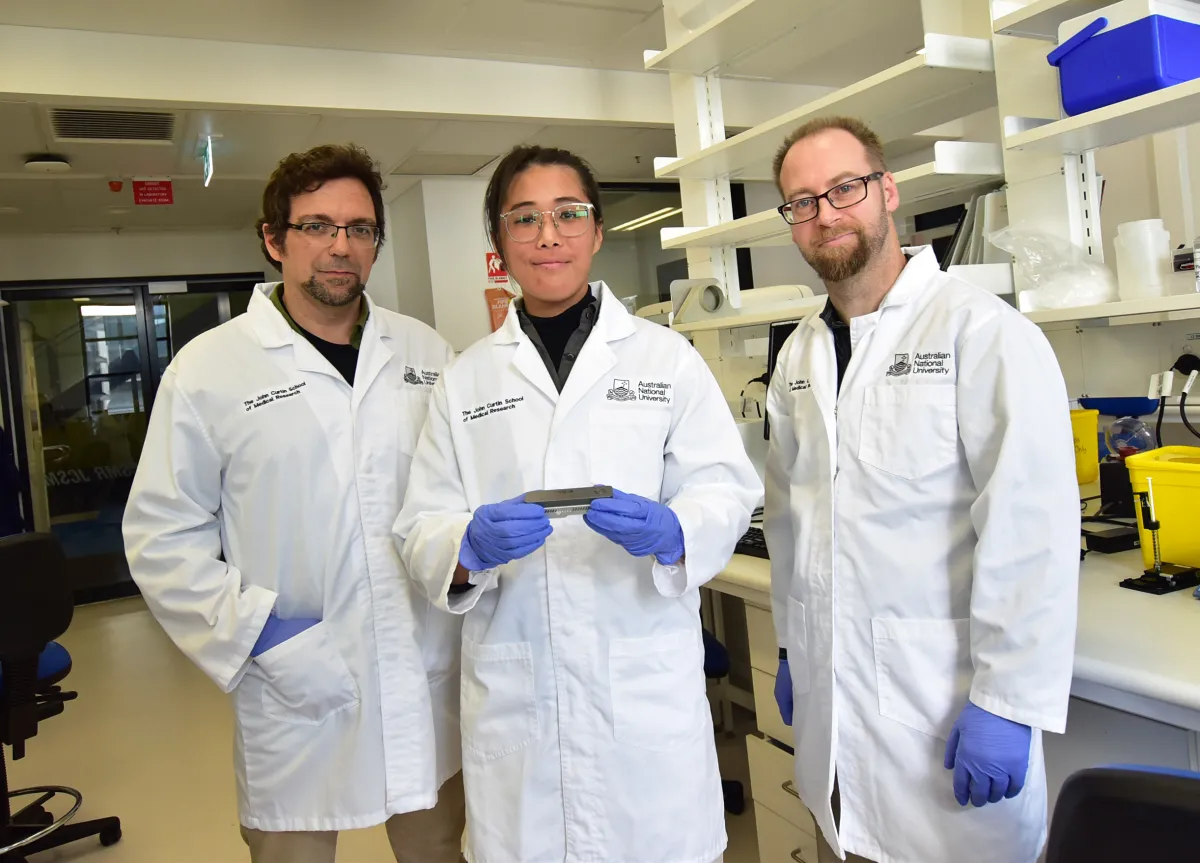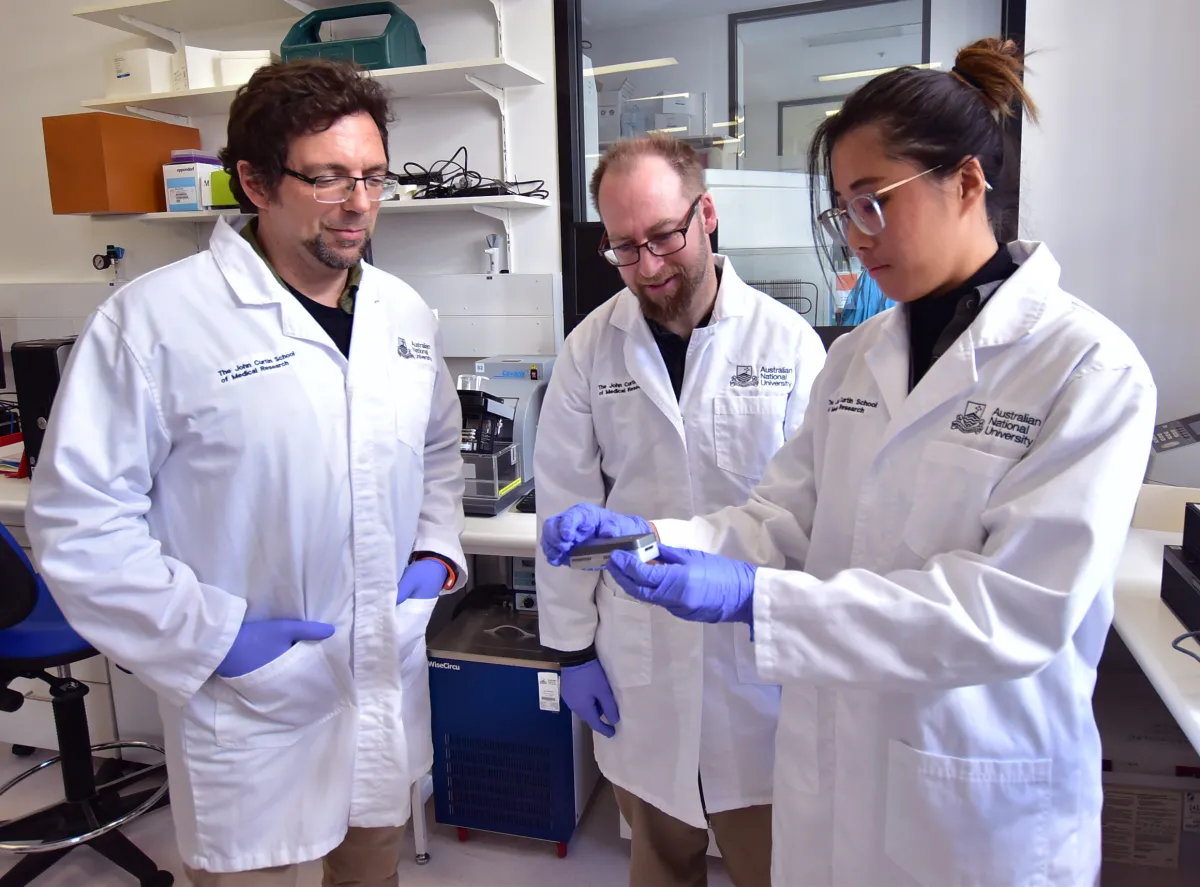JCSMR-led Nanopore sequencing study paves the way for advancements in Forensic Science

Dr Zaka Yuen (center) with her collaborators, Professor Eduardo Eyras (left) of the Centre for Computational Biomedical Sciences, and Cameron Jack from the ANU Bioinformatics Consultancy. (Photo: Kassapa Senarath/JCSMR Communications)
In a groundbreaking study, Dr Zaka Yuen and collaborators at the John Curtin School of Medical Research (JCSMR) utilised nanopore adaptive sampling to identify DNA methylation markers related to age and body fluids.
While every cell in the body contains the same DNA, the different properties and functions of these cells are determined by switching genes on and off through a process called methylation.
Advances in understanding DNA methylation have led to the discovery of specific patterns, or markers, that can pinpoint the tissue of origin from an unknown DNA sample. Methylation patterns also change with age, revealing markers crucial for estimating age in forensic investigations.
Nanopore sequencing offers a novel approach to uncovering these age and body fluid markers by examining the chemical modifications of the genome. This innovative method allows for the inclusion of multiple methylation markers in a single assay, moving from traditional wet lab techniques to more efficient computational strategies. As a result, the testing of multiple forensic markers has become both more efficient and portable.
“The ability to measure multiple markers simultaneously without additional treatments represents a significant shift from experimental to computational strategies for marker detection,” said Dr Zaka Yuen.
“Our findings demonstrate the technology's precision in identifying methylation patterns linked to age and body fluids, which has significant implications for forensic science.”

(Photo: Kassapa Senarath/JCSMR Communications)
Key Highlights
- Traditional methods use specialised protocols and are fragmented across separate assays.
- Targeted long-read sequencing addresses this fragmentation in methylation marker detection.
- Multiple markers can be measured simultaneously without additional treatments.
- The approach transitions from experimental to computational strategies for marker detection.
- Multiple age and body fluid methylation markers can be verified in a single experiment.
Traditional methods for studying DNA methylation are complex, costly, and time-consuming, limiting the number of markers that can be tested. Nanopore sequencing, however, offers significant advantages by enabling direct measurement of DNA in its native state. By threading DNA molecules through a molecular pore, scientists can analyse changes in an electric current to read the DNA’s molecular content, including methylation. This approach eliminates extensive sample preparation and allows for comprehensive methylation profiling across large DNA fragments.
Another key advantage of nanopore technology is real-time control over what passes through the pore, known as adaptive sampling. This feature allows researchers to focus on specific regions of the genome while discarding irrelevant parts.
This successful application of nanopore sequencing not only highlights its potential for rapid and accurate forensic analysis but also paves the way for further development of nanopore-based techniques, marking the beginning of a new era in forensic profiling.
This research was recently published in Forensic Science International: Genetics. Read the full study.
